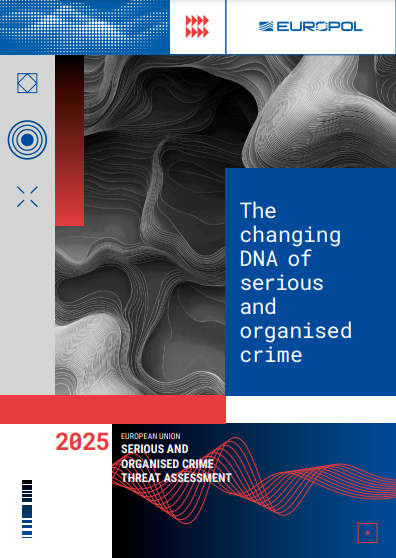The Hidden Dangers of Cybercrime-as-a-Service: Protect Yourself Now!
1,404 words, 7 minutes read time.
In today’s digital age, the internet offers convenience and connectivity like never before. However, with this digital transformation comes an alarming rise in cybercrime, particularly the evolving phenomenon of Cybercrime-as-a-Service (CaaS). Just as legitimate businesses have embraced subscription-based models, so too have cybercriminals. They now offer sophisticated tools and services that allow virtually anyone—regardless of technical expertise—to commit serious crimes online. Whether you’re an individual or a business, understanding the dangers of CaaS is essential for your digital safety. This document will explore what CaaS is, why it’s growing at such an alarming rate, and most importantly, how you can protect yourself against these threats.
Understanding Cybercrime-as-a-Service (CaaS)
At its core, Cybercrime-as-a-Service (CaaS) is exactly what it sounds like: a marketplace where cybercriminals sell or rent tools, malware, and expertise to other criminals, enabling them to launch cyberattacks. In many cases, these services are remarkably easy to access. You don’t need to be a hacker or have any advanced knowledge of cybercrime to take advantage of CaaS—just a willingness to pay for the tools or services offered.
Cybercrime-as-a-Service has become an extremely lucrative industry because it allows criminals to specialize in one area of cybercrime, while outsourcing other aspects to others. For example, one group might specialize in developing malicious software like ransomware, while another group might focus on distributing it to a larger audience. Some services even offer “affiliates”—individuals who can promote malware to a larger user base in exchange for a cut of the profits, creating an ecosystem that thrives on the exploitation of others.
In many ways, CaaS mirrors legitimate business models. Subscriptions can range from paying for a one-time malware tool, to long-term rentals, or even access to a fully managed attack service. And just like with any other business, CaaS providers offer customer support to help “clients” successfully launch their cyberattacks.
According to Field Effect, “The rise of Cybercrime-as-a-Service has made it easier for virtually anyone to engage in cybercrime, even if they lack the skills traditionally needed to carry out such attacks.” This has not only increased the frequency of cyberattacks but also democratized access to cybercrime, allowing individuals from all walks of life to participate.
The Escalating Threat Landscape
The expansion of Cybercrime-as-a-Service has contributed to a dramatic increase in cyberattacks around the world. In fact, cybersecurity firm Varonis reports that the average cost of a data breach in 2024 was $4.88 million. These breaches can occur at any scale, from small businesses to massive multinational corporations, and have severe financial consequences.
Additionally, the increasing sophistication of CaaS has led to more targeted and destructive attacks. Ransomware attacks, for example, which are often enabled by CaaS, have evolved from simple, disruptive events into highly organized, devastating campaigns. One notorious example is the 2020 attack on the healthcare sector, which saw multiple hospitals and health providers held hostage by ransomware groups. This attack exemplified how cybercrime-as-a-service can be used to disrupt essential services, putting lives at risk.
The rise of CaaS has also resulted in an alarming increase in attacks on critical infrastructure. According to Thales Group, “Cybercrime-as-a-Service is being used to target everything from energy grids to financial institutions, making it a real concern for national security.”
The increased availability of these cybercrime tools has lowered the entry barrier for aspiring criminals, resulting in a broader range of cyberattacks. Today, these attacks are not limited to large organizations. In fact, small and medium-sized businesses are often seen as low-hanging fruit by cybercriminals using CaaS tools.
Real-World Impacts of Cybercrime-as-a-Service
As mentioned earlier, the financial impact of cyberattacks facilitated by CaaS is staggering. The Cybersecurity Ventures report suggests that global cybercrime costs will reach $10.5 trillion annually by 2025. These costs include direct financial losses from theft and fraud, as well as the broader economic impact of disrupted services, data breaches, and reputation damage. Organizations across sectors are feeling the strain of increased cybercrime activities, and they are struggling to keep up with evolving threats.
The healthcare industry, in particular, has been a primary target. According to a report by NordLayer, “The healthcare sector has witnessed a significant uptick in cyberattacks, primarily driven by the accessibility of CaaS tools.” Ransomware attacks targeting health providers not only result in huge financial losses but can also cause life-threatening delays in treatment for patients.
But it’s not just large organizations that are impacted. Individuals are equally at risk. Phishing attacks, identity theft, and data breaches are just a few of the ways cybercriminals take advantage of unsuspecting users. With the help of CaaS, cybercriminals can easily harvest sensitive information from individuals, sell it on the dark web, or use it for further criminal activities.
For instance, tools that allow hackers to impersonate legitimate institutions or create fake login pages are commonly offered as services. These tools make it difficult for even the most cautious individuals to discern what is real from what is fake. The result is an increasing number of people falling victim to online fraud, with often devastating consequences.
How to Protect Yourself from Cybercrime-as-a-Service
Understanding the threats posed by Cybercrime-as-a-Service is only half the battle. Protecting yourself from these dangers requires vigilance, awareness, and the implementation of robust cybersecurity measures.
One of the most basic yet effective steps you can take is ensuring that your online passwords are strong and unique. The use of multi-factor authentication (MFA) is another critical layer of defense, which makes it significantly harder for cybercriminals to gain unauthorized access to your accounts, even if they have obtained your password.
Additionally, regular software updates are essential. Keeping your operating system and applications up to date ensures that security vulnerabilities are patched, making it much more difficult for malware to infiltrate your system. According to CISA, “Failure to regularly update software creates a prime opportunity for cybercriminals to exploit vulnerabilities.”
In terms of specific measures, it’s vital to become aware of the various forms of social engineering and phishing attacks commonly used by cybercriminals. Many individuals are lured into clicking on malicious links or downloading harmful attachments through cleverly disguised emails or social media messages. Learning to spot these threats can save you from becoming another victim of CaaS-enabled attacks.
Staying informed is another key aspect of defense. Cybercrime is an ever-evolving threat, and so is the CaaS landscape. Keeping up to date with emerging threats will help you stay ahead of cybercriminals. Resources like Kaspersky and KnowBe4 offer regular updates on the latest cybersecurity trends and provide valuable insights on how to protect your personal and professional data.
Conclusion
Cybercrime-as-a-Service is a rapidly growing threat that has made cybercrime more accessible than ever before. From ransomware to data breaches, the impact of CaaS on individuals, businesses, and even entire industries is far-reaching and increasingly dangerous. However, by understanding these threats and taking proactive steps to protect yourself—such as using strong passwords, enabling multi-factor authentication, and staying informed about emerging cybersecurity risks—you can safeguard your personal and business data from malicious actors.
In conclusion, while Cybercrime-as-a-Service presents significant challenges, the good news is that we can fight back. With the right knowledge and tools, everyone has the power to reduce the risk of falling victim to cybercriminals. Stay vigilant, stay informed, and most importantly, take action today to protect your digital life.
Join the conversation! What are your thoughts on the growing threat of CaaS? Share your experiences or tips for staying safe online by leaving a comment below. And don’t forget to subscribe to our newsletter for more cybersecurity insights and tips!
D. Bryan King
Sources
- Cybercrime as a Service (CaaS) Explained – Thales
- The Rise of Cybercrime-as-a-Service – Field Effect
- Cybercrime-as-a-Service Explained – TechTarget
- Understanding Cybercrime-as-a-Service – Register.bank
- Cybercrime as a Service (CaaS) – Splunk
- The Rising Tide of Cybercrime-as-a-Service – Cyber Defense Magazine
- CaaS Evolution and How to Protect Yourself – KnowBe4
- Cybersecurity Best Practices – CISA
- How to Protect Yourself from Cybercrime – European Parliament
- What is Cybercrime and How to Protect Yourself? – Kaspersky
- Cybersecurity Statistics 2024 – NordLayer
- Cybersecurity Stats and Trends 2024 – NU
- 157 Cybersecurity Stats [2024] – Varonis
- Cybercrime to Cost $9.5 Trillion in 2024 – eSentire
- Latest Cybercrime Statistics [2025] – AAG IT Services
Disclaimer:
The views and opinions expressed in this post are solely those of the author. The information provided is based on personal research, experience, and understanding of the subject matter at the time of writing. Readers should consult relevant experts or authorities for specific guidance related to their unique situations.
Related Posts
- Why Victims Are Hesitant to Report Cybercrime – And How This is Hindering the Fight Against Cybercriminals Date February 4, 2025
- How AI is Reshaping Cybersecurity: Emerging Threats and Powerful Defenses Date March 18, 2025
- Cybersecurity in the Remote Work Era: The Surprising Truth About Protecting Your Home Office Date April 1, 2025
#AIAndCybersecurity #attackPrevention #CaaS #CaaSExplained #CaaSMarket #CaaSTools #cyberThreats #cyberattackPrevention #cybercrime #cybercrimeAsAService #cybercrimePrevention #cybercrimePreventionTips #cybercrimeResources #cybercrimeStatistics #cybercrimeTools #cybersecurityAwareness #cybersecurityBestPractices #cybersecurityForBusinesses #cybersecurityForIndividuals #cybersecurityNews #cybersecuritySolutions #cybersecurityStrategy #cybersecurityThreats #cybersecurityThreats2024 #cybersecurityTrends #DarkWeb #dataBreachStatistics #dataBreaches #dataProtection #digitalProtection #digitalSecurity #hackerTools #identityTheft #internetPrivacy #internetSafety #maliciousSoftware #malwareAsAService #multiFactorAuthentication #onlineFraud #onlineFraudPrevention #onlineSecurityThreats #onlineSecurityTips #personalCybersecurity #phishingAttacks #phishingPrevention #protectYourAccounts #protectYourBusinessOnline #protectYourData #protectYourselfOnline #ransomware #ransomwareAttacks #risingCybercrime #secureBrowsing #secureYourDevices







